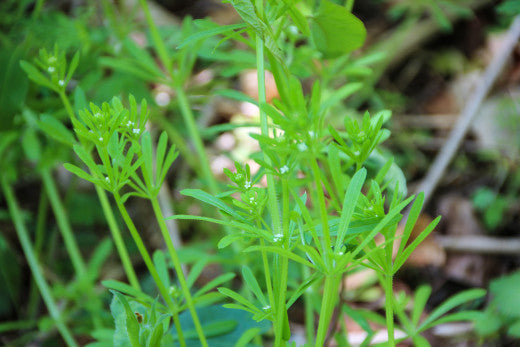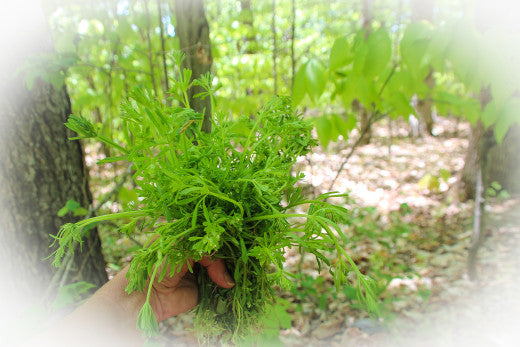Backyard Herbs: Cleavers- Lymphatic Aide and Much More!

The earth is greening up all around us and for those of us who want to create our own home medicinals, it's never too soon to get started collecting and drying those lovely “weeds” we who know better call herbs. Today I will give you the lowdown on cleavers, an herb that is a very foundational one to have in your herbal medicine chest and makes a delicious cooked green side dish as well. Galium aperine, or cleavers, is an annual herb, which means that when you collect it, you want to leave plants in the collection area to go to seed to produce a crop next year. As a matter of practice, with any herb you are collecting, always leave behind a good patch of whatever you are harvesting. Take a little here and a little there and you will always have your sources remaining strong from year to year.

This plant is identifiable by its whorled, lance-shaped leaves - usually 6- 8 around the stem and a prickly, “sticky” square-shaped stem, which will adhere back upon itself or to just about anything you hold it up against. The little hairs on the stems are hooked, much like the burdock seeds. If you have your children along when you are collecting, they will find this very entertaining. Ancients would weave the stems together to make sieves. There is another plant in the same family - gallium mollugo, or, whorled bedstraw, which also has squared (but hairless) stems and wider, lance-shaped leaves in whorls which can be confused with cleavers.


 The actions attributed to cleavers are: diuretic, alterative, anti-inflammatory, tonic, astringent, anti-neoplastic, hepatic, laxative, and vulnerary. Cleavers can also bring relief in urinary tract infections and are widely used topically to relieve dry skin conditions, like psoriasis. Cleavers have been used in the treatment of ulcers and tumors and have been used in experimentation with dogs as an agent in reducing blood pressure without slowing the heart or having any other side effects!
The actions attributed to cleavers are: diuretic, alterative, anti-inflammatory, tonic, astringent, anti-neoplastic, hepatic, laxative, and vulnerary. Cleavers can also bring relief in urinary tract infections and are widely used topically to relieve dry skin conditions, like psoriasis. Cleavers have been used in the treatment of ulcers and tumors and have been used in experimentation with dogs as an agent in reducing blood pressure without slowing the heart or having any other side effects! 
The best use of the constituents of cleavers is through infusions or extracting the fresh juice to use immediately. To get the benefits of the citric acid, glycosides, asperulosides and gallotannic acid that this plant has to offer, an alcoholic tincture of the fresh plant can also be prepared and kept long term. Using the dried aerial parts in a tea is the easiest way to use cleavers, soaking a tablespoon of the dried herb for 10-15 minutes and drinking it. Some day I will hopefully have enough experience to write an article on making tinctures, but for now, I just do a folk method of filling a jar with the herb and topping it off with vodka, letting it steep for a few weeks while shaking now and again before finally straining it for storage. There is no way of knowing what the strength of your herb component is to alcohol in these tinctures, but there is a way to do tinctures where you measure things very scientifically with weight and volume and then can know the strength of the resulting tincture.





Leave a comment